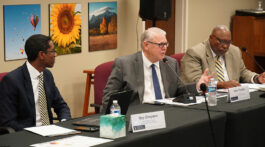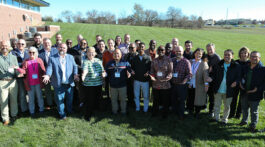Author’s note: Over the next few weeks, I will be journeying with you through a series of posts I am entitling Recalibrating Doctrines. The doctrines will recalibrate not in content, but in expression.
A few months ago, I posted a question on Facebook to survey what troubled my friends about Adventism.
In the post, I asked what Adventist beliefs they struggled to believe and/or had the most difficulty accepting. I assured them the space was safe and that they would not be judged for sharing. As the responses came in, I began to notice that many made no distinction between fundamental beliefs and church policies or even church traditions. A number of my friends’ comments centered on women’s ordination or worship programming—issues that are important, but are not “Adventist beliefs.”
There were some who identified specific beliefs. But overall, there was a mix, and I eventually had to remind my friends that I was interested in discussing fundamental beliefs. The forum conversation went well, but the mix left me wondering if perhaps what I observed among my friends is common among American Adventists. Could it be that there were others whose definition of Adventism was a potpourri of policy, tradition, sayings, and beliefs?
This troubled me because I admit that I have struggled to properly define both what Adventism is and what it means to be a faithful Seventh-day Adventist. I always figured that problem was unique to me, but my Facebook post made me wonder if perhaps this problem of misunderstanding Adventism was more common than I imagined.
So what is Adventism?
Well, across my twenty-three years as an Adventist church member—and I say that humbly, not proudly, because for the majority of that time I’ve been maturing slowly, continually relearning humility—I have had the privilege to spend time in various scenes of the Seventh-day Adventist church. I grew up in the Hispanic church scene. I hopped around the Midwest, West Coast, and Southern American scenes. I spent time in the self-supporting ministries scene, the canvassing scene, the summer camp scene, official church organizations scene, the university scene, and a few international scenes—briefly, but enough to get a glimpse of Adventism in Germany, Egypt, and Colombia.
All the scenes had their quirks; they did some things well and they did some other things not so well, but they have all contributed to the kind of Christian I am today.
And the scenes that have had the most positive impact upon me were the ones that had the most dynamic definition of Adventism.
Like all inspiring things, these experiences were surreal, sacred, and transcendent. Difficult to put into words, and even more difficult to explain. I am sure you have felt that kind of inspiration in your ribcage—a pulsating sense of “this is why I exist.”
In those settings and experiences, Seventh-day Adventism was easy to understand. Adventism was not a long list of church manual procedure, and it was not an agenda handed down by a union or general conference.
I am sure you have, as I have, participated in conversations where regurgitated oral traditions from parents and pastors and Mrs. White leave you wondering if original thought is even possible in such circular system.
I can assure you that none of that is Seventh-day Adventism.
Seventh-day Adventism—the kind that is compelling and worth sharing—is what people do when they want to know Jesus every possible way they can and serve Him without any regard for the ego’s self-preservation.
Systematic theologians will often develop visual models to help organize belief systems. The visual models show hierarchy—what’s important and what’s less important—as well as relationship—what needs to be placed before other beliefs can be placed. Think of these like Legos. If I am building something out of Legos, certain pieces will be more important than others because maybe they are limited or foundational. Additionally, say I am building a house. It will probably be good idea to set down the foundational pieces for the model before attempting to install my cool custom window pieces.
We might say that there are some Lego pieces that are dependent upon other pieces. In the wheel model of beliefs, there needs to be a hub. And all other beliefs will be attached to and dependent upon this hub.
The wheel’s hub is Jesus, and Jesus alone.
So what is Adventism?
That’s easy. No matter what scene you favor in our diverse global church, Adventism is the logical conclusion of a people who want to know Jesus and are willing to do whatever it takes to know Him better.
Nothing else—whether it be prophecy, or Ellen White, or the Sabbath, or a social justice cause, or a philosophical tenet—will be strong enough to hold the wheel of Adventism together.
Perhaps you have at times felt bad about the quality of your Adventism. Perhaps this was caused by someone else or by your own presuppositions judging yourself. I know it happens, because I often wonder if I should even call myself an Adventist.
It is then that I ask myself, “Do I want to know Jesus?” And, “Am I willing to do whatever it takes to get to know Him?”
If yes, then nothing else matters. The hub is in place, and now we can begin to build.










